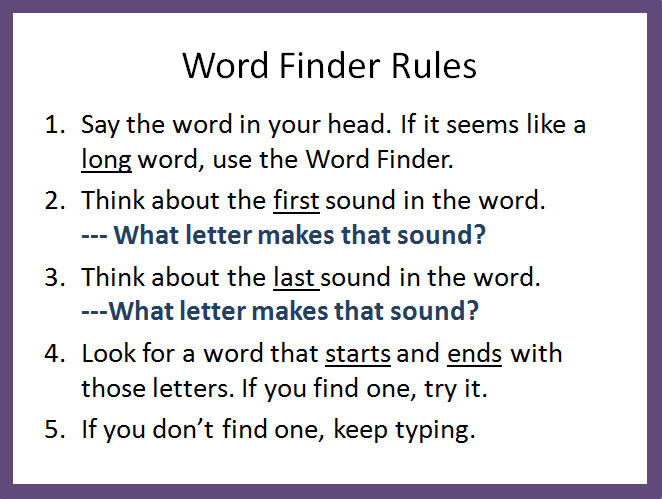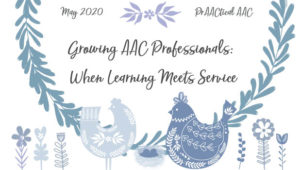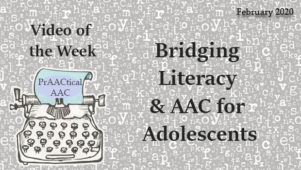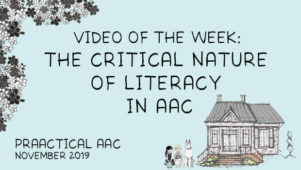Strategy of the Month: Thoughts on Teaching Word Prediction
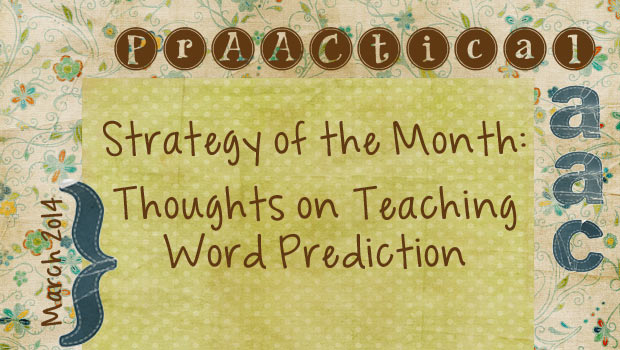
As we wrap up a month of AAC and literacy, let’s look at a strategy that spans communication, reading, and writing. Word prediction, as you know, is a strategy in which the learner begins spelling a word and the AAC device provides a word bank of possible options using a prediction algorithm. There are lots of kinds and levels of prediction, and the technology keeps getting better and better. Word prediction is built into most high tech SGDs, many text-to-speech apps, and some writing programs. In this post we consider some of the issues around using and teaching word prediction.
Time and Effort
Word prediction (WP) saves keystrokes, which is important for our prAACtical friends who have limited energy, poor endurance, and issues with fatigue. Does it save time? Not always, and there were some important studies that revealed this in the mid-1990’s. Of course, technology has improved a lot since then, but basically the answer depends on a lot of variables. For instance:
- What is the basis of comparison? Are we comparing it to spelling out the whole word, using an icon sequence, using letter codes, or something else?
- How powerful is the word prediction engine? Some have enormous stores of words in the WP dictionary. Some ‘learn’ the AAC user’s pattern of language use and predict based on that specific user versus a general case scenario.
- How well does the communicator switch cognitive sets? To use word prediction, we have to:
- decide to interrupt the automaticity of writing,
- conceptualize what the written word looks like,
- peruse the options that were predicted,
- determine whether the desired word is in the list, and
- decide whether to select one of the predicted words or return to typing.
This is obviously a complex process and requires specific cognitive abilities to switch between types of tasks. Shifting from a motor task to a series of cognitive tasks may be challenging for clients with brain injury and others.
4. How skilled is the communicator with their AAC? Keep in mind that they may be faster saying the word with their Minspeak-based or other AAC system, (if the word is in there).
Bottom line: Word prediction is not always a time-saver.
Teaching Word Prediction
How we teach word prediction depends, like almost anything else we do, on the AAC learner’s skills and abilities. Here are some of the things that have worked for us in teaching word prediction to people with limited literacy skills.
- Consider the initial and final letters: Even when learners don’t know all the letters consistently, they can often learn to a) think about the word, b) think about the sound it starts and ends with, c) think about what letters make those sounds, and d) look at the options to see which of them start and end with those letters.
- Consider the word length: Teach the learner to think about how long the word is. This aspect of phonological awareness is a
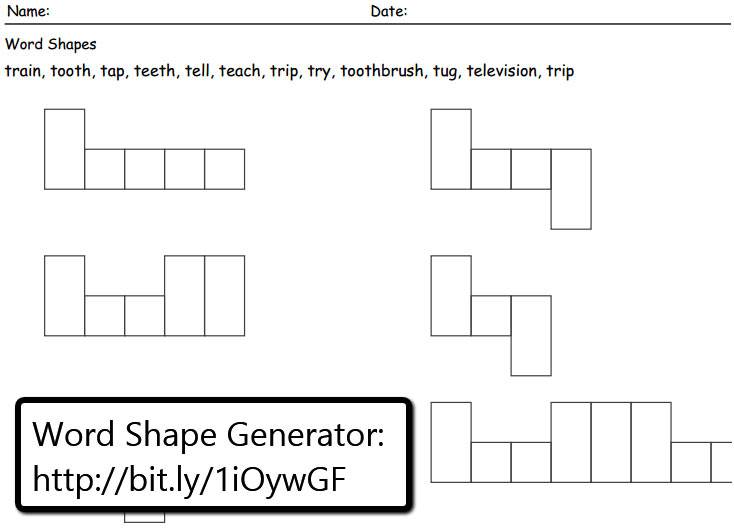 developmental process, so it may take a little work to get the learner to be able to do this. Early on, learners will respond based on semantics/meaning, not the phonological aspects of the word. For example, if I say which is the short word, train or caterpillar, they will select caterpillar because that is a short thing while train is a long thing. It is only later in the process that they can distinguish the length of the referent from the length of the way the word sounds (or is spelled). For some AAC learners, we may have to teach this skill. We’ve found that using manipulatives and/or movement help AAC learners discriminate long versus short words.
developmental process, so it may take a little work to get the learner to be able to do this. Early on, learners will respond based on semantics/meaning, not the phonological aspects of the word. For example, if I say which is the short word, train or caterpillar, they will select caterpillar because that is a short thing while train is a long thing. It is only later in the process that they can distinguish the length of the referent from the length of the way the word sounds (or is spelled). For some AAC learners, we may have to teach this skill. We’ve found that using manipulatives and/or movement help AAC learners discriminate long versus short words. - Consider the shape of the word: Another option is to teach the learner to think about the overall shape of the word. This pulls together the concepts we just discussed (starting/ending letters, word length) and introduces a new concept: how those letters impact the overall shape of the word.
- Consider the letters in the middle of the word: This works well when the learner encounters predicted options that all start and end with the desired letters, yet still faces difficulty picking out the correct word. Have them consider the sounds and letters in the middle of the word, and use that information to help them make a selection.
Have a learner who responds impulsively or who looks to word prediction after typing the first letter? We’ve found that some AAC learners who have good literacy skills don’t automatically use word prediction in an efficient way. For learners like this, it can be helpful to set up specific guidelines for how to use word predictions. It can be a list of rules or a simple guideline (e.g., “Type 3 letters, then check”).
Resources
- Text-to-speech apps with word prediction matrix from IPAT ND
- Carolann Cormier’s Pinterest Board of word prediction apps
Do you have suggestions for teaching word prediction? We’d love to hear about them.
Filed under: Strategy of the Month
Tagged With: literacy, word prediction
This post was written by Carole Zangari
